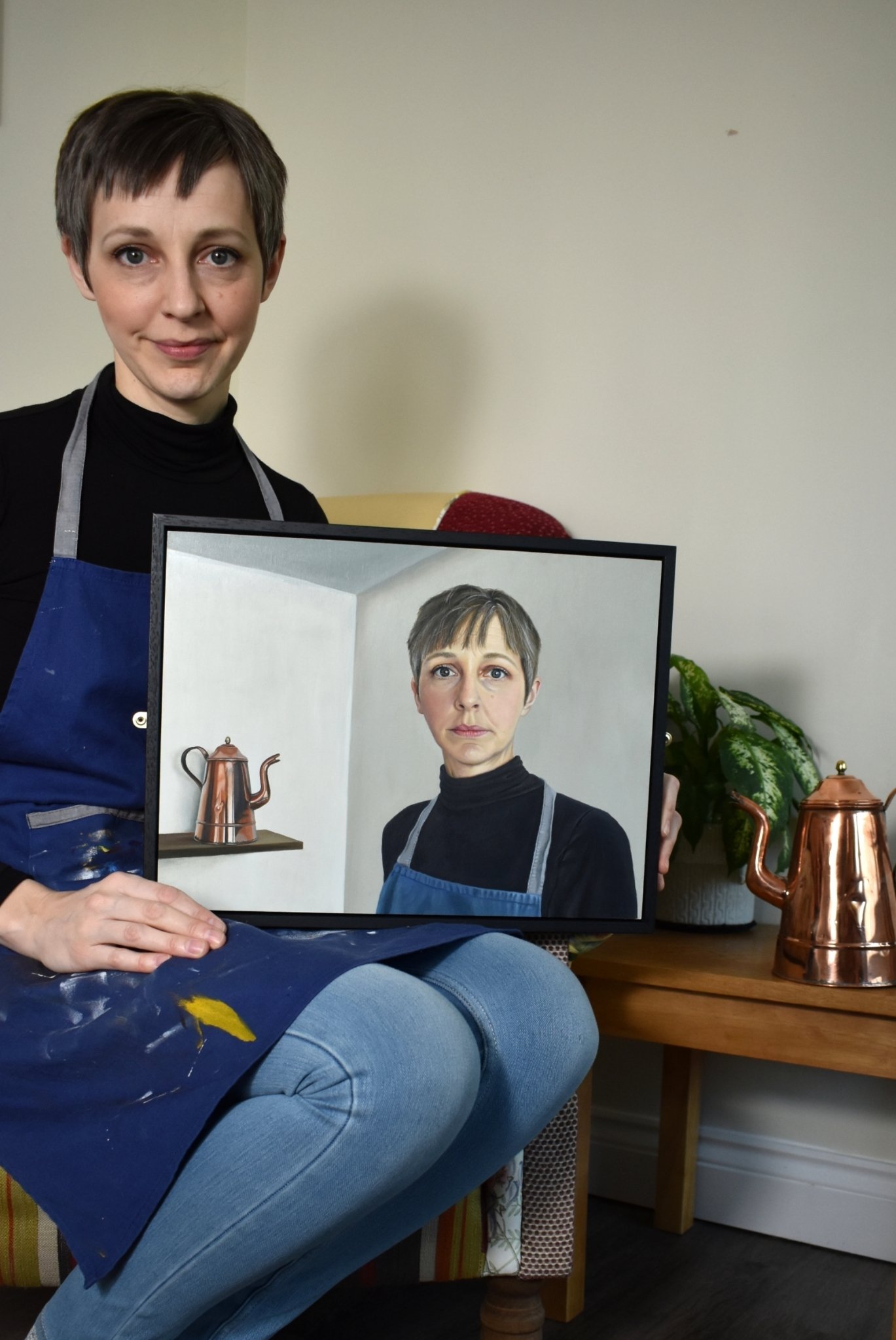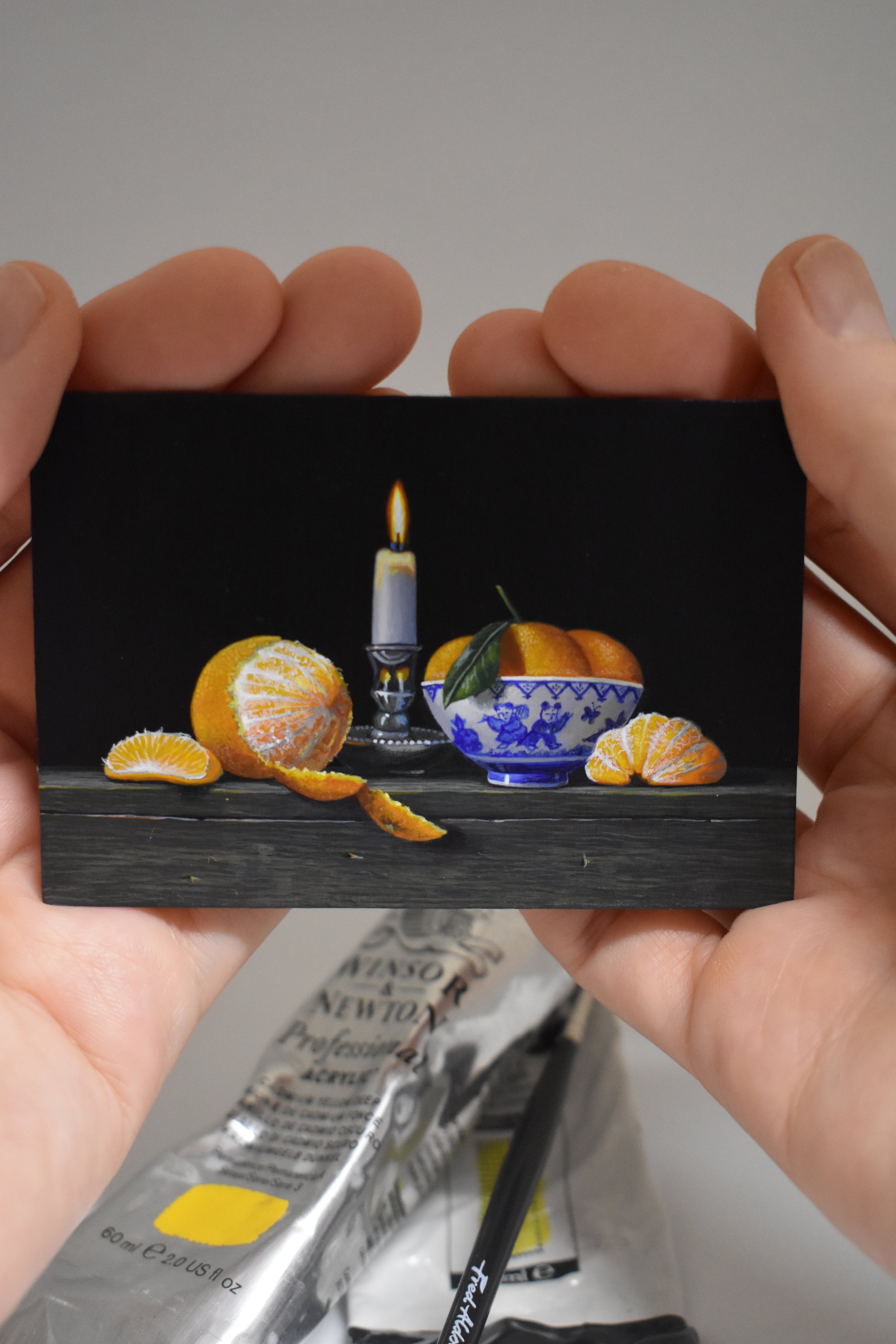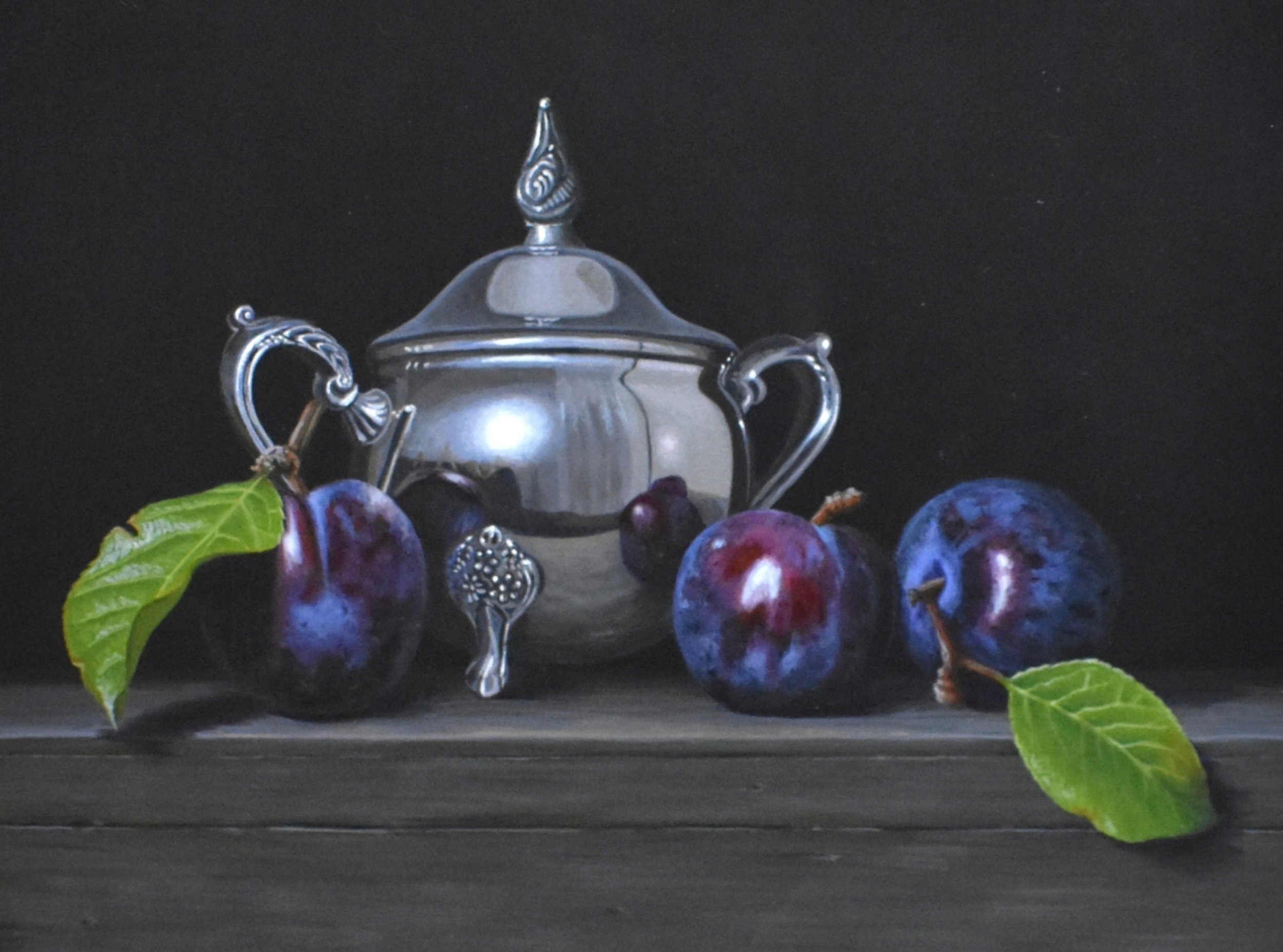ARTIST INTERVIEW: Laura Critchlow
Tell me about yourself. What inspired you to become an artist?
I am a still life and portrait painter, based in Buxton, Derbyshire. Creating has been a part of my life for as long as I can remember. I haven't studied art at university, I'm a self-taught artist. This has allowed me to follow my own path and not be deterred away from painting what inspires me.
A recent self portrait I have completed, has allowed me to explore a conversation I wanted to have with my younger self. The child's drawing on the easel is based on a very early memory from school of being told how good my drawing was, whilst at the same time being informed by my teacher that people draw as a hobby, not as a profession. This was a statement I believed and went on to base life choices on. However, time has allowed me to follow my original path, that my child self wanted to choose.
I have been painting for over 30 years now, however will always consider myself to still be learning, which both excites and drives me forward. I still make the regular pilgrimage to the London galleries to study the works by the grand masters for inspiration.
What is it that you find interesting about painting still life?
In still life work I can mindfully contemplate the objects and depict what is there in front of me. The idea that I have a short window of opportunity to paint that specific piece of fruit is exciting. That unique object has never grown exactly like that before, and it will never do again, so I feel a duty to capture its every detail in time.
What would you like to show through your work?
I aim to draw the viewer into my work, so they too can spend a moment quietly observing an object that very often would be overlooked. I paint the marks and characteristics of each specific piece that naturally occur in organic objects. Observers remark on the beauty of the paintings, whilst they view items that are often far from perfect.
How do you choose your composition?
Many of the objects in my pieces come from my late Grandparents’ house. They were hoarders. They collected many objects over the years, which as a child fascinated me when we used to visit them. There are a lot of memories attached to the objects in my pieces. Then the fruit either comes from my local supermarket (often the ‘reduced’ section, as I love the idea of giving an item that’s past it’s best the chance of some limelight!) Or from fruit I find out and about on walks, such as wild raspberries or damsons. I will then set up a composition in my studio. Quite often I will paint the metal or pot objects first, along with the background. I will then add in the fruit last, that way it doesn’t spoil before I’ve finished the painting.
How long does it take you to create one of your pieces? What is your creative process?
Each still life piece has between 20 – 30 hours spent on it – and about 30 years of practice! Even my miniature works often have a similar amount of time spent on them. All my still life paintings are worked in acrylic paints, with a limited palate of often just four colours plus white. My portrait paintings have around 80+ hours spent on them – my portrait paintings are undertaken in oil. I find oil painting easier to blend, which helps with the skin tones of a portrait. I’m also able to use glazes more successfully with oil paints for the portrait work.
Painting in progress of Wild Damsons, Acrylic
Who is your favourite artist and why? Do they have an influence on your work?
My favourite artist is Caravaggio. The drama that he captures using tone is outstanding. He also didn’t shy away from painting his muses as he found them. He didn’t tidy up their nails, hair or clothing just because they were depicting important figures from religious texts or to please his client, instead he painted what the people of his time looked like.
What has been your greatest achievement so far as an artist?
I find submitting work to open exhibitions a very useful exercise and I’m always thrilled when work is accepted, though you have to be able to take the rough with the smooth! After many years of successfully exhibiting miniature paintings with the Royal Miniature Society, in 2018 I was granted full membership of the society, this was a very proud moment for me. I was also delighted to have a self portrait exhibited with the bi-annual Ruth Borchard, Self Portrait Prize in 2021 – this was a pivotal moment to push me more towards portrait painting.
Why do you think art is important in society?
For children and adults creating art gives you freedom, you choose your subject, style, colours and where and how you apply your chosen medium. The creator then has the opportunity to share a story. They can highlight an injustice, share a moment that’s ‘before it’s time’ or challenge thinking in an non-confrontational manner. The observer of the art then becomes part of the process. Art can ground a wandering mind or create many more questions than answers.
Art in the moment of creation and observation is freedom.










